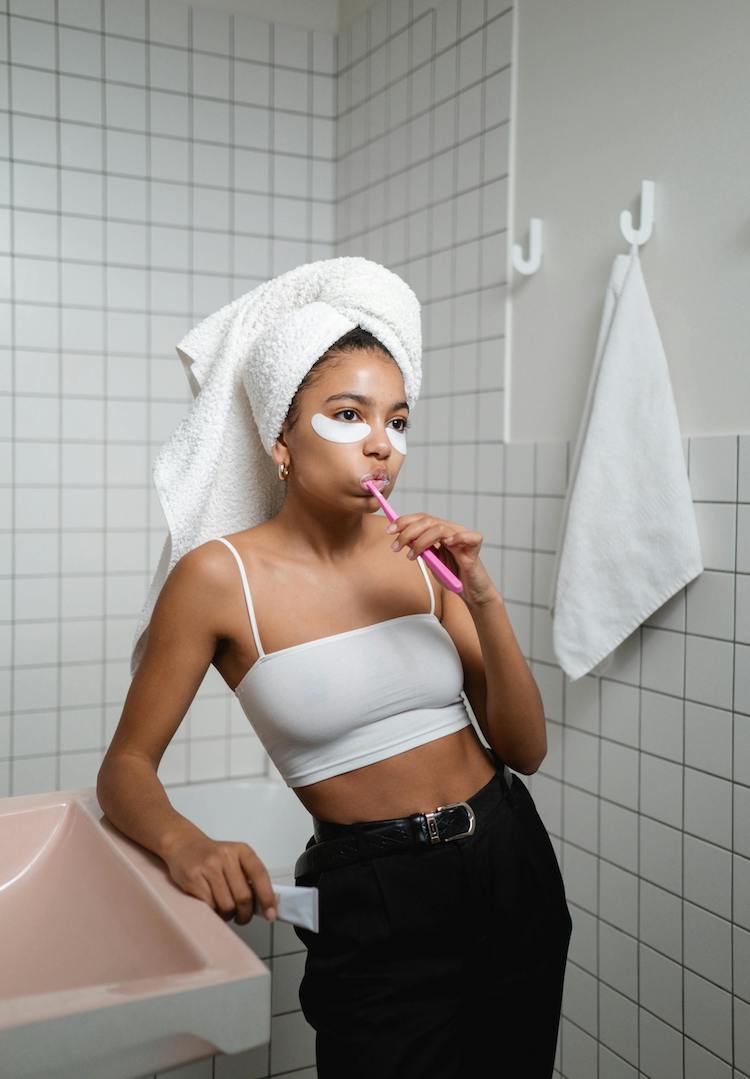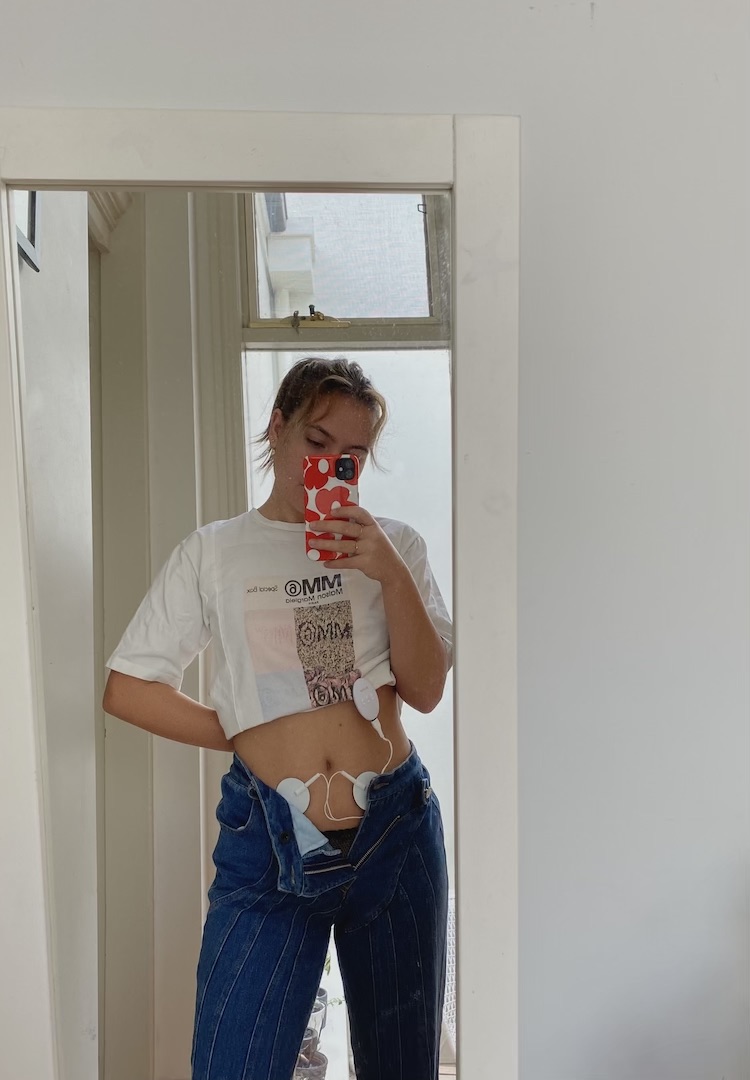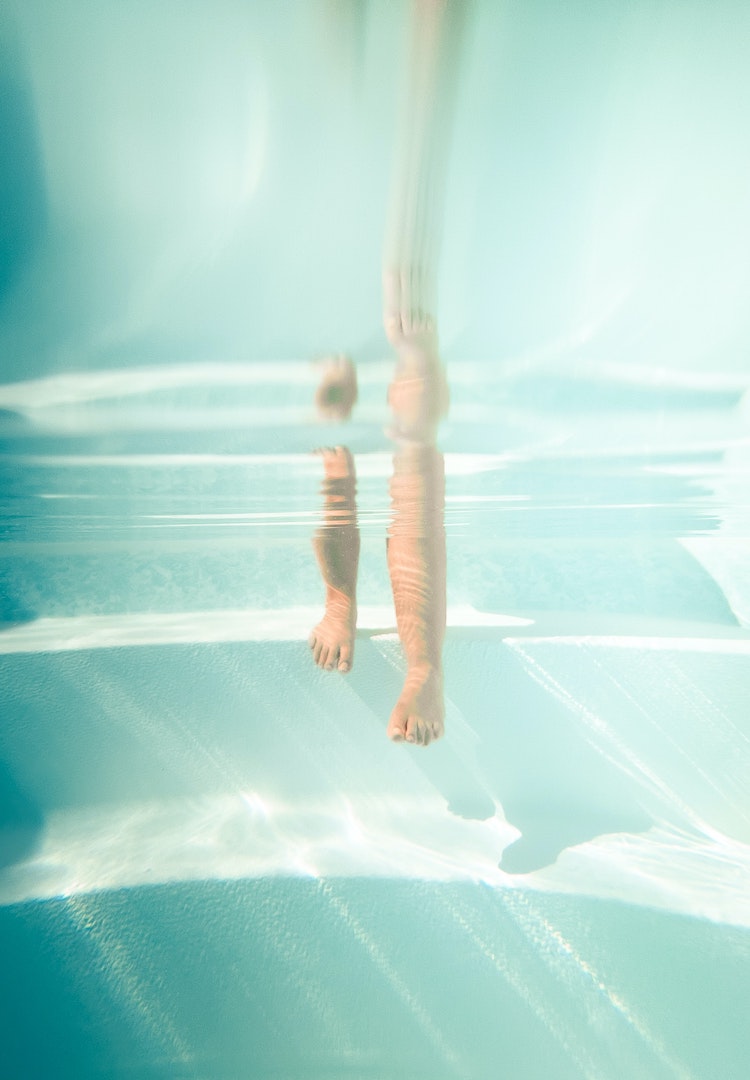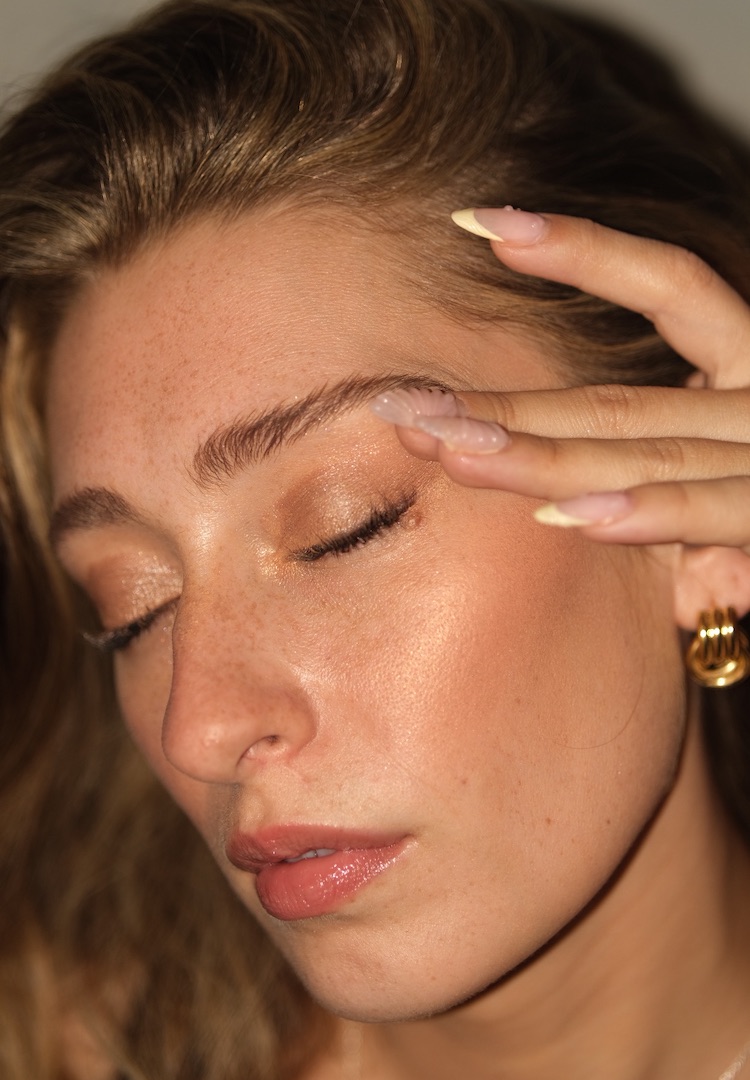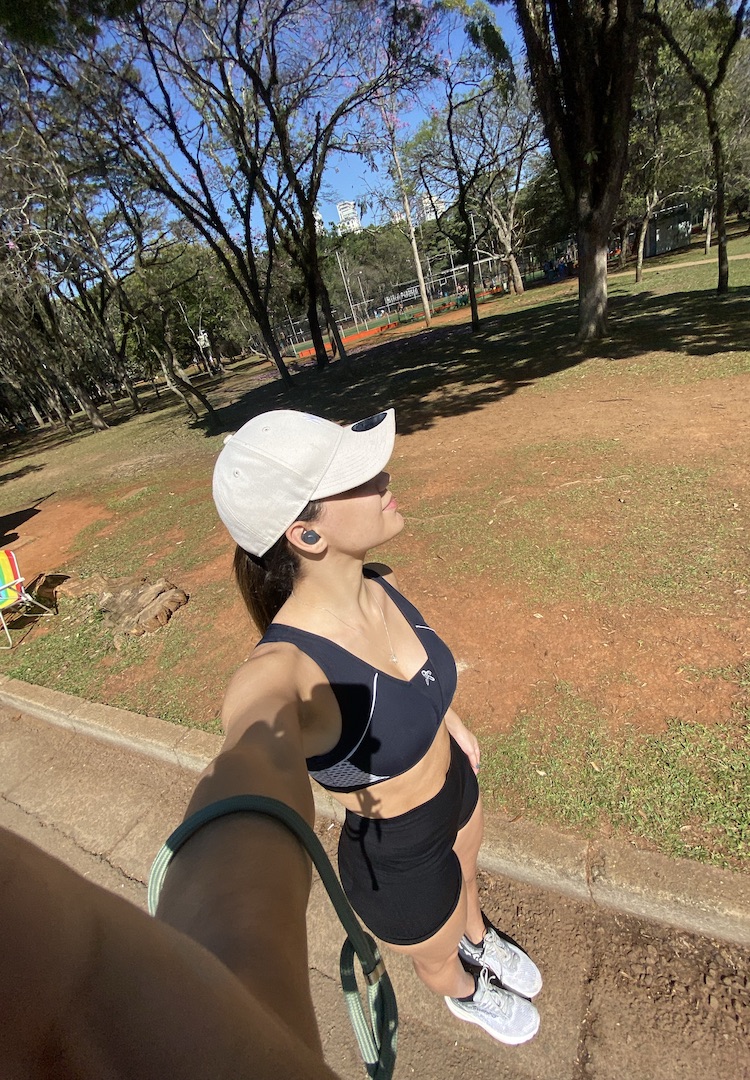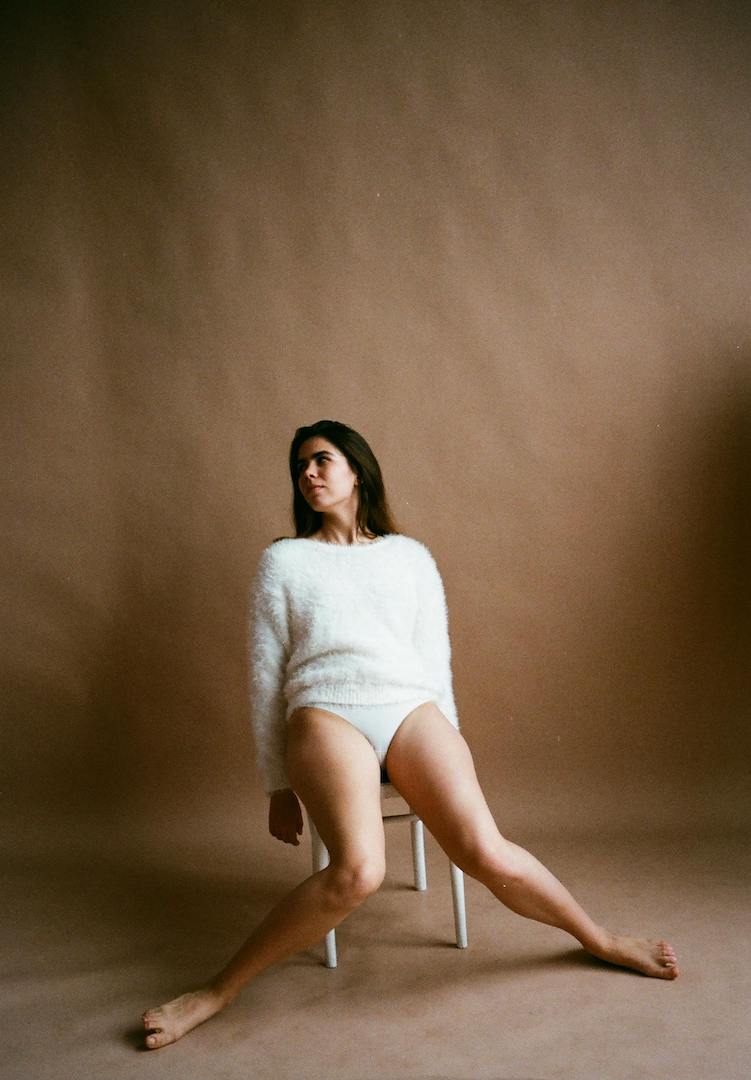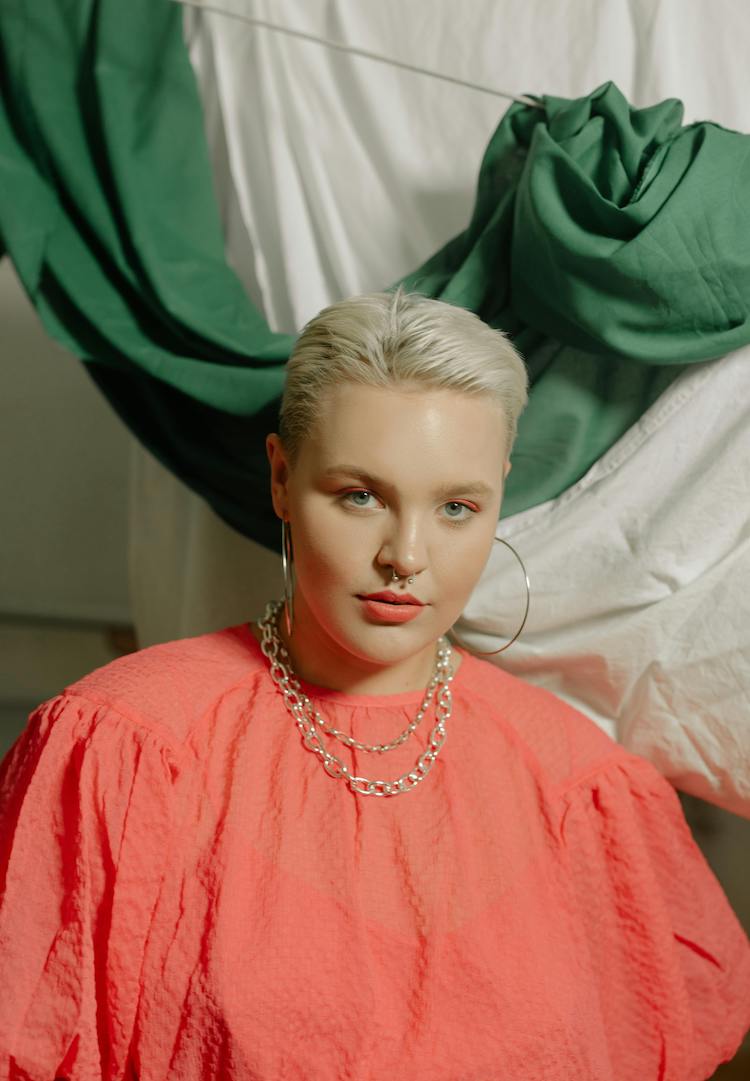I tried an Australian-made pain relief device to deal with my endometriosis pain
WORDS BY ELLA TAVERNER
In search of relief from endometriosis.
I was 11 years old when I was thrust into the realm of womanhood, an experience that felt cruelly ironic at the time. While my days were spent with tanbark in my shoes and asphalt grazes on my knees, my reproductive system was marching to a different beat.
I do not doubt that my story is very similar to that of someone close to you; a sister, aunty, friend or colleague. The mild cramps I experienced to begin with quickly morphed into a different monster entirely. I have distinct memories of being curled on the cold kitchen floor in the fetal position, head in my hands and sweat on my forehead while my mum rang the GP. I had my first abdominal ultrasound at 13.
Kickstart your wellness journey over at our Health section.
The subsequent diagnosis? Wind pain. For the next decade, I begrudgingly accepted that period pain was a part of my life, and the period pain holy trinity became my safeguard: Naprogesic, a heat pack and peppermint tea.
Flash forward to 2019 – a year marred by bouts of cyst ruptures and fainting episodes – and I finally dragged myself back to the GP. I vividly remember waking at 4am one night in excruciating pain that could only be rationalised as either a burst appendix or Ridley Scott’s Chestburster creature from the 1979 movie Alien clawing its way out of my uterus.
After many internal ultrasounds, referrals to a gynaecologist and specialist scans, I went through with a laparoscopy in June of 2020. The laparoscopy showed stage four endometriosis with deep adhesions that my gynaecologist suspected had been there for years, a diagnosis that left me both relieved and dejected.
A common misconception is that endometriosis is found solely in the reproductive system. During my surgery, they found extensive adhesions and cysts on both my bladder and bowel and weren’t able to remove them all.
One of the first questions I asked my gyno after my operation was how I had lived with such a severe case of the disease without even knowing it. To make things even more convoluted, she informed me that the physical pain of endometriosis doesn’t necessarily equate to the severity of the disease – something I’ve thought about a lot since.
It’s this void in education and discussion that has allowed the disease to fly under the radar for years, with ‘women’s issues’ frequently acting as a euphemism for endometriosis, PCOS and other debilitating conditions.
While my pain had significantly improved post-surgery with the help of the Kyleena IUD, I was by no means out of the woods. I saw a naturopath, changed my diet, and introduced castor oil into my routine. But the Ovira Noha device had been on my radar for a while, with ads popping up here and there on my socials.
To be honest, my initial impressions were rather underwhelming. It looked like a money grab from yet another corporate entity looking to capitalise on women’s pain. However, when I dug a little deeper, I learnt that not only was it female-founded by Australian Alice Williams but that she too suffered from endometriosis.
After hearing stories from friends of friends, and seeing a post from Fashion Journal contributor Jasmine Wallis, I decided to swallow my pride and give it a go. The device is drug-free and uses transcutaneous electrical nerve stimulation or TENS technology to overload the nervous system to reduce the transmission of pain signals to the brain.
Better yet, it’s safe to use with both synthetic and copper IUDs. The technology has been around for years as a method for short-term pain relief for back and neck injuries, arthritis and more recently, period pain.
The package arrived in a neat little aesthetically pleasing box. To be frank, at face value the high-tech contraption was alarmingly intimidating, looking like something from the set of Grey’s Anatomy. Upon further inspection, and to my surprise, the instructions were relatively straightforward. I charged up my Noha device and got back to work.
About half an hour later, I slapped on the aptly named Love Handles a few centimetres below my belly button where I tend to get the most pain. Small electrical currents run through the pads and into your nerve roots that supply sensory fibres to the uterus. The little oval control allows you to increase and decrease the strength of the pulses as you please, depending on your pain levels.
Expecting to feel something reminiscent of a crappy nail salon massage chair, the tiny little pulses felt more like a subtle sensation of pins and needles, but in a soothing way (who knew that was possible?) I’m extremely sceptical of anything that promises to provide instant pain relief, particularly given I’ve tried everything under the sun to help my pesky endo cramps.
But within 20 minutes, the dull ache radiating from my right ovary and the pulsing sciatica in my leg (cheers, referred pain) had noticeably lessened. I went about my day paying very little attention to the device on my belly, at times forgetting it was even there.
For the ensuing days, I continued using my Noha device as I set about my usual business of working from home. The low abdominal pain that likes to flare up around lunchtime had massively reduced to a subtle ache that I hardly even noticed. My daily pain which fluctuated between five to seven was unquestionably quashed to a solid two.
I even took my device for a lap around the block to my local cafe, with all the bits and bobs tucked away nicely (and unnoticeably) under my jumper. My Noha and I seemed to operate in such harmony that when getting changed I accidentally flung the device across the room, forgetting it was clipped to my top, but this is probably more my error than a product fault (oops).
The only real downside to the device? Ovira advises against sleeping while wearing Noha, as the application of electrical impulses on the neck, chest or face can be dangerous. So for now, I’ll keep my handy heat pack on stand-by for nighttime use. Knowing there are companies out there like Ovira whose genuine ethos lies in improving the quality of life for those who suffer from chronic period pain warms my heart (and uterus).
So would I recommend it? It’s hard to give a definitive answer here as all bodies are unique. What has worked for me may not necessarily work for the next person. But if you too are scraping the barrel when it comes to effective pain relief, and are interested in trying a drug-free option, I recommend you give it a go. I’m sure glad I did.
This article was originally published on July 23, 2021.
Find out more about Ovira here.

